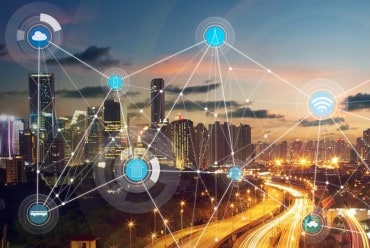
“A house is just a place to keep your stuff until you go out and get more stuff.” -George Carlin
The Internet of Things and real-time data visibility is very exciting stuff.
But that’s all it will be – lots of stuff – unless it gets successfully applied to real business situations.
It’s just a question of how to get there – and there are many avenues, according to David Menninger, analyst with Ventana Research.
“Some see potential value in expanding their network infrastructure to support operational intelligence,” Menninger says. “Others are implementing event processing systems that employ new technology to detect meaningful patterns, anomalies and relationships among events. Increasingly, organizations are using dashboards, visualization and modeling to notify nontechnical people of events and enable them to understand their significance and take appropriate and immediate action.”
One thing is clear: to become analytics-driven, organizations need to get a handle on collecting, preparing and analyzing streaming, fragmented data. A new ebook published by Datameer, “Big Data Analytics and the Internet of Things: Exploring Enabling Technologies and Industry Opportunities,” provides some guidelines on adopting big data analytics capabilities.
“Data volumes can double every few months, and the data itself is complex – often in hundreds of different semi-structured and unstructured formats,” the book states. “Most importantly, to gain the big insights from streaming sensor data, you need to be able to manage and analyze all of your structured and unstructured data together, all at once.”
The Datameer book illustrates how forward-thinking companies in key industry groups are employing big data analytics in profound ways to successfully leverage the information coming out of IoT.

Oil and gas: Planners can access and explore datasets that aggregate well sensor data, historical productivity data, and geospatial data, as well as publicly available data on the productivity of competitor wells, to determine sites best suited for additional investment for exploration. With this information, “production engineers can arrive at better production decisions faster, lowering well costs and increasing well performance.” For example, armed with real-time data from this array of sources, “business analysts were able to identify the highest performing wells, as well as what made them perform optimally. Using these insights, the production team developed a new and enhanced well design.”
Broadcasting and cable: Businesses are employing usage data to better predict and forecast future network capacity for increasing video player usage. Insights are based on automated analysis of terabytes of IPCDN session log data across a vast carrier network and performing predictive trend analysis of customer video viewing behavior patterns. The company is identifying “concurrency in player sessions and peak usage times and dates, and then clustering that customer-level information by usage patterns to forecast for future growth and network demands.” This helps guide new network investment decisions – which is critical, “as it costs billions of dollars and takes years to build out networks.”
Technical support: A major enterprise tech provider is pulling insights from customer purchase data, product support logs, and server logs, and then analyzing this data to predict events, “such as when a server might run out of storage or memory capacity or a failure may occur.” This asset data is doubling in volume every 15 months, so the ability to aggregate and standardize the data in one place was key to the ability to provide real-time customer service.
Smart homes: A large home automation company is constantly analyzing terabytes’ worth of streaming data to intelligently manage a streamlined network that connects all of its customers’ homes’ smart systems, including security, HVAC, energy management, lighting, small appliances, video, and other devices. By harnessing big data, customers’ homes are “smarter, safer, and more energy efficient.”





























